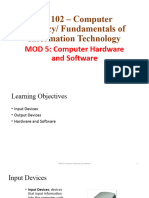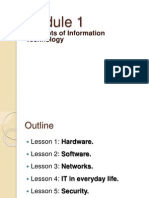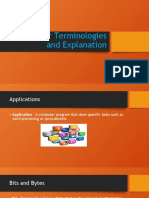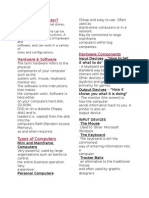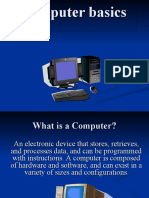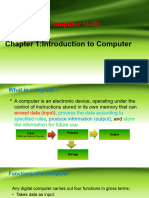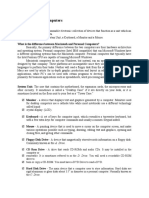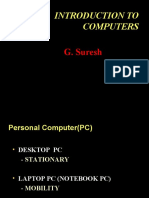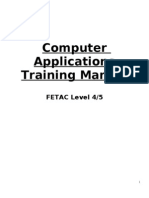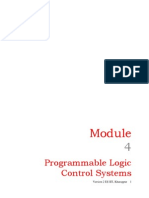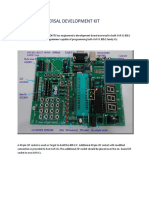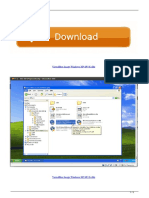0% found this document useful (0 votes)
121 views25 pagesChapter 5 - Basic Computer Hardware and Software
This document provides an overview of basic computer hardware and software components. It describes input devices like keyboards and mice, as well as output devices like monitors and printers. It also discusses the central processing unit, computer memory, data storage devices, ports, graphics cards, and networking components. The document provides definitions and examples to explain these fundamental computer parts and how they work together.
Uploaded by
Muhammad rizky fauzi nurrohmanCopyright
© © All Rights Reserved
We take content rights seriously. If you suspect this is your content, claim it here.
Available Formats
Download as PPTX, PDF, TXT or read online on Scribd
0% found this document useful (0 votes)
121 views25 pagesChapter 5 - Basic Computer Hardware and Software
This document provides an overview of basic computer hardware and software components. It describes input devices like keyboards and mice, as well as output devices like monitors and printers. It also discusses the central processing unit, computer memory, data storage devices, ports, graphics cards, and networking components. The document provides definitions and examples to explain these fundamental computer parts and how they work together.
Uploaded by
Muhammad rizky fauzi nurrohmanCopyright
© © All Rights Reserved
We take content rights seriously. If you suspect this is your content, claim it here.
Available Formats
Download as PPTX, PDF, TXT or read online on Scribd
/ 25






